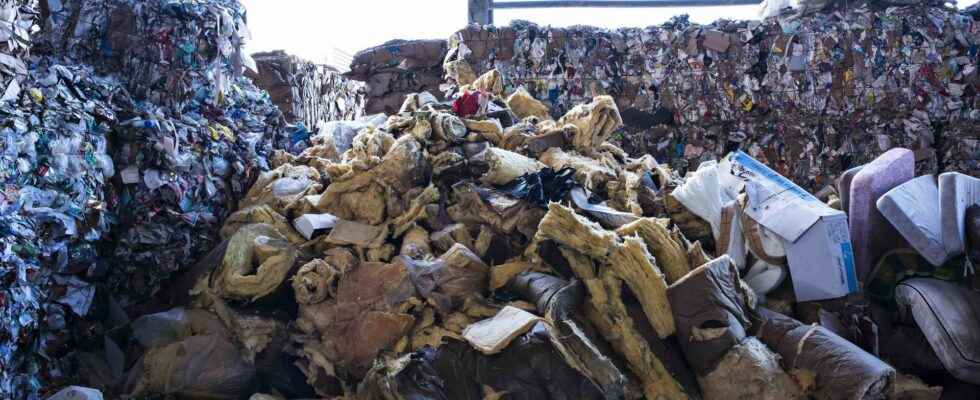On the occasion of World Recycling Day, and two years after launching its recovery and recycling subsidiary ” Isover Recycling », Isover takes stock of the recycling and reuse of glass wool.
You will also be interested
[EN VIDÉO] Is it possible to recycle solar panels? Since 2012, a European directive has forced manufacturers of photovoltaic panels to collect and recycle. But is the recycling of such panels technically possible? Marion Perrin, doctor in electrochemistry, explains to us, in a video, that the operation no longer poses any difficulty today.
Registered in his DNAthe material recycling is the very principle of the manufacture of the glass wool. Today, this insulation mineralthermal and phonic, integrates at least 40% recycled materials. Good, but still insufficient, this share should double by 2030 to reach 80%. To succeed in this bet, Isover has set itself the objective of recovering the waste of glass wool from the deconstruction of buildings, i.e. 75,000 tonnes/year. A second axis is under the fire spotlights: the renovation of buildings built in the 1970s and 1980s. These projects should double the volume of waste by 2030. In all, nearly 150,000 tons/year of waste will be produced, most of which will in most cases be buried. If nothing is done, this does not bode well for the preservation of natural resources. A shame for a product that is originally 100% recyclable, and this, to infinity.
Recycle, reuse: objectives achieved
At the launch of Isover Recycling in 2018, the aim was to contribute to the objectives of growth green in accordance with the text of the energy transmission law for green growth. By 2020, the aim was to recover 70% of building waste, reduce non-hazardous and non-inert waste by 30%, and reduce non-recyclable manufactured products by 50%. Goals achieved or even exceeded.
To date, Isover Recycling has collected 150 tons of used glass wool. Four hundred tonnes should be recycled at the end of 2021. This ultimately represents more than 5,000 tonnes of materials raw materials that will be reinjected to make new rolls of glass wool.
A circular economy in three steps
Large or small site, this approach, which is everyone’s business, is very simple. Companies (contractors) contact a qualified collector ” Isover Recycling “. The latter is responsible for training teams and organizing sorting and collection. The collector compacts in big bag and transports the waste to the “Oxymelt” recycling center. There, the waste is transformed into cullet to be reused in glass wool production lines. Spread over 35 departments, the success of recycling glass wool relies on 20 collectors who manage 60 recycling centers.
If the will displayed can make it possible to drastically reduce the burial of glass wool, it remains to this day that only one treatment center located in Orange (Vaucluse) is capable of transforming it. This is why, with the exception of the Ile de France, where major projects are handled, the departments concerned by the recycling glass wool, are located in the South-East of France.
What you must remember
- Cullet reduces the consumption of raw materials and energy and reduces CO emissions2.
- Glass wool is made from recycled glass (cullets) and sand.
- The service life of glass wool is several decades.
Interested in what you just read?
